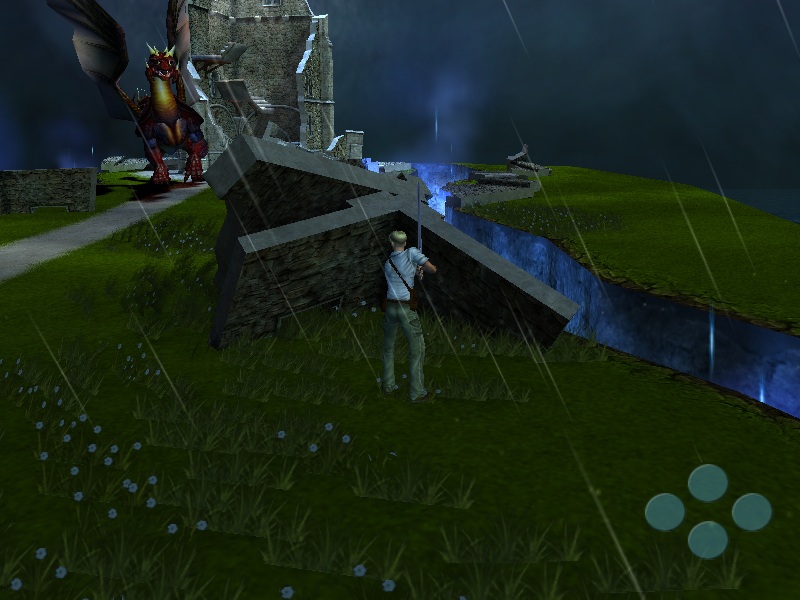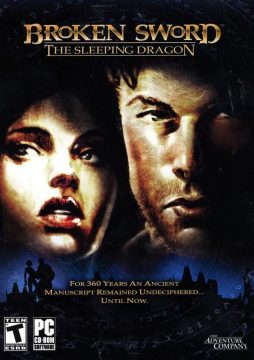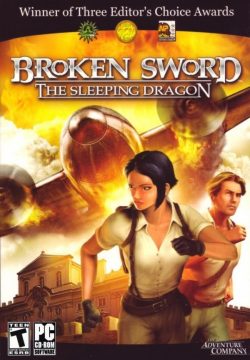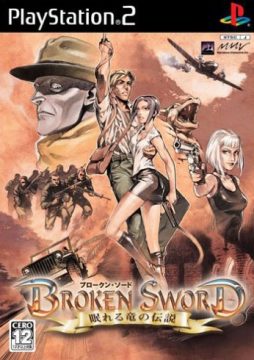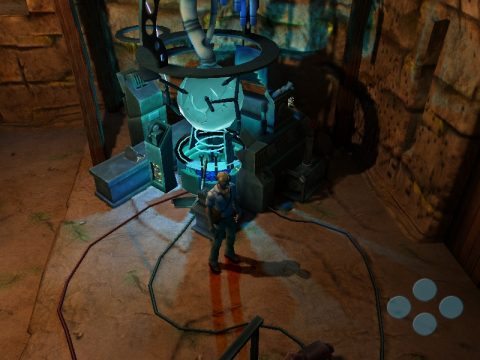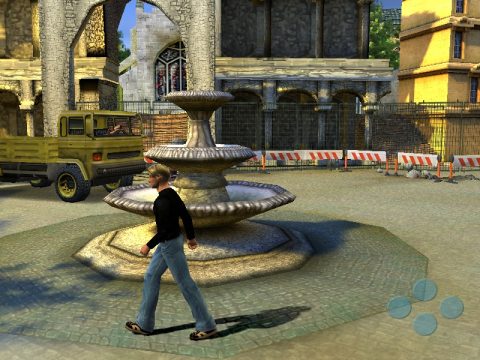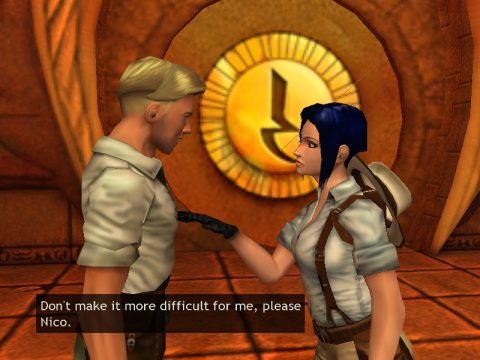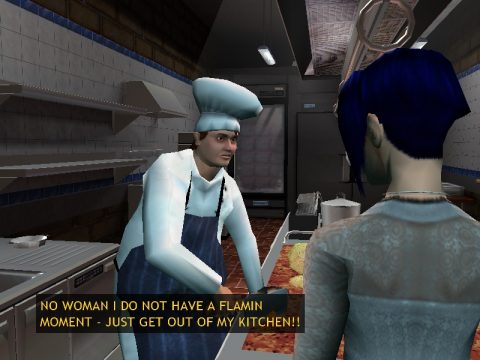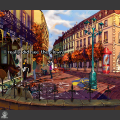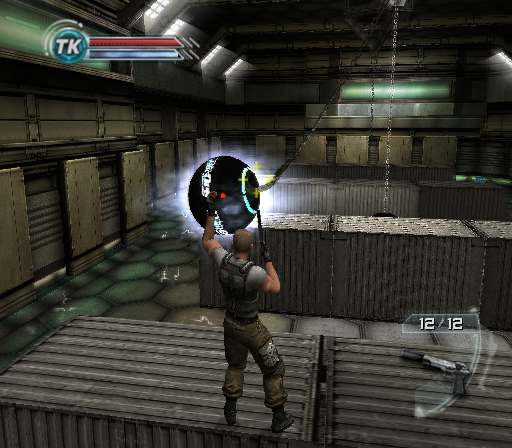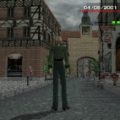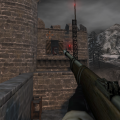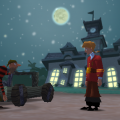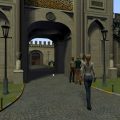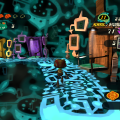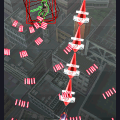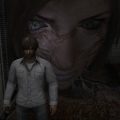One would think the life of a patent lawyer would be boring – what with being cooped up in an office in Idaho, of all places – but that’s not the case with George Stobbart, who seems destined for crazy adventures. Although him and Nico have since split up, he ends up in the Congo jungle to investigate a patent for a machine that can apparently create limitless energy. It seems too crazy to be true, but things get complicated when George witnesses his client being murdered by a sinister man named Susarro. Meanwhile back in France, Nico has an appointment to interview a hacker who’s decoded the mysterious Voynich Manuscript…until said hacker is murdered by a woman dressed in disguise, framing Nico in the process. The view switches back and forth between the two, until both of them learn that their investigations are connected to the same mystery.
Susarro has taken charge of the Neo-Templars and renamed them The Cult of the Dragon. He seeks to harness a geothermic power of the Earth by mining ley lines (also described here as Dragon Veins), allowing him to rule the world. The adventure is structured much like the previous games, with lots of globe trotting to be done and secret artifacts to be found. George travels to Glastonbury, which is apparently a tourist trap due to the folklore behind the place (it has heavy connections to King Arthur and the Grail legend) while Nico stays in Paris for her part. When the two team up, they explore a temple in Congo, complete with Indiana Jones-style traps and puzzles, invade Susarro’s castle in Prague, and discover the true secret of the Dragon in Egypt.
A lot happened in the eight years between the release of the second and third Broken Sword games. Lucasarts and Sierra, formerly the two giants in the arena, gave up after Grim Fandango and Gabriel Knight 3, leaving the field to a handful of independent programmers. Once again unfazed by the odds against them, Revolution revived their flagship franchise with The Sleeping Dragon… but not without some significant changes, in hopes to capture a bigger market.
The biggest and most obvious alteration are the completely 3D polygonal graphics in lieu of the hand drawn 2D cartoons. The change removes much of what made the original Broken Sword games unique, and so it looks like practically every other game on the market. That being said, it actually looks pretty good, with detailed, well lit locales and fairly decent character models. Since the plot is somewhat connected to the original game, there are a few familiar places you can explore, like Nico’s apartment and Montfaucon Square, but now rendered with polygons.
With the change in visual style also comes a completely different control scheme – the mouse driven interface has been completely ditched in favor of direct control. You can technically use a keyboard, but it’s obviously designed for a gamepad. (In addition to the PC version, it was also released on the Xbox and PlayStation 2, with the latter only being available in Europe. A Gamecube version was planned but cancelled.) As you move close to an object, you can press one of the four face buttons to interact with it, depending on what it is. The camera style is much like Resident Evil: Code Veronica, with mostly static viewpoints that occasionally scroll or switch positions based on your movement. While it’s a bit awkward – and can potentially cause some troubles in a handful of action based segments – at least it doesn’t utilize the much maligned tank controls of Resident Evil. In a further bit of frustration, you can no longer skip lines of dialogue, which tends to make things drag a bit.
Another big problem that comes with 3D graphics are its location designs. In the 2D games, areas can consist of a small handful of still screens. In 3D games, they need to be much larger, which also means a lot more tedious running around. This game has a number of filler areas which serve nothing but to waste time, especially when you first enter a new section and find out that five of the six doors are locked and completely irrelevant. They could’ve done a lot to condense the spaces, although it probably would’ve felt too cramped to be believable.
This may be a tough barrier to get over for many longtime adventure game enthusiasts – especially those with a case of PC gamer elitism – but it generally works well. But it’s not without its problems, which mostly involve puzzle design. There are still a number of inventory based puzzles, some of which involve getting help from your partner, but for some reason, the developers figured the use of 3D space meant that it would be suitable to stick in box puzzles, the bane of video gamers everywhere. They start off simple, but soon get more complex and irritating as the adventure moves on. What’s even worse is the boneheaded decision to stick in a few stealth segments. Like the original games, there are a handful of reaction events, where you need to press a button within a split second notice, or run from an enemy, or else you’re killed. There’s no need to reload any saved games, because it picks off right before the segment starts, but you still need to rewatch the cutscene over and over until you get it right.
It also seems that with the shift away from cartoony graphics came the desire to be a bit more mature. The plot is just as cool as the previous games, and George and Nico are still just as amusing, but The Sleeping Dragon is largely missing a lot of the quirk that defined the rest of the series. With the exception of some of the characters early on in Glastonbury, most of the NPCs just don’t have the same snap, and the dialogue just isn’t nearly as funny. You can no longer talk about every item in your inventory with everyone, which was probably to cut down on extraneous dialogue, but also loses a lot of flavor. There are still some cool aspects, though – you get to meet the niece of Lady Piermount (the snooty woman from the hotel in the first Broken Sword), as well as her crazy father, and it’s neat how they turned Professor Bruno, an extremely minor character from the first game, into a major supporting character in this one. So despite its issues, The Sleeping Dragon is still a pretty cool game – it’s just not quite up to its predecessors.
Also, beware that the original US release of The Sleeping Dragon features the much dreaded Starforce copy protection. To get around this, either get one of the compilation DVDs that includes all three games, or download it from a place like Good Old Games.
Quotes
Irate Scottish Chef: Who the hell are you anyway?
Nico: Er… Susan.
Irate Scottish Chef: Susan? What kind of pathetic, girly name is that?
Nico: It’s er… a name for a girl.
Irate Scottish Chef: Well change it. I don’t like it.
